Contemporary Chicago artists work in a wide variety of media, but a surprising number of them draw inspiration from the same man, one who never even set foot here: Pablo Picasso. The Art Institute’s current centenary exhibition, Picasso and Chicago, is a great collection—here are five memorable moments from a recent visit.
To follow up, we asked five artists based in the city why they were drawn to some of the themes and styles that the Spaniard favored.
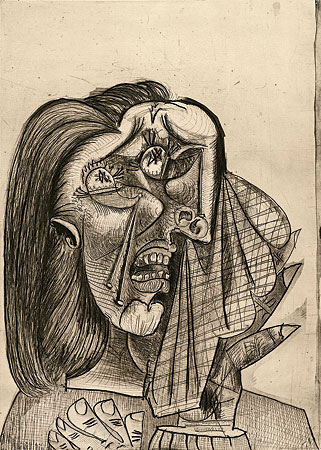
Pablo Picasso, Weeping Woman I, July 1, 1937. printed by Roger Lacourière. The Art Institute of Chicago (AIC). Through prior acquisition of the Martin A. Ryerson Collection with the assistance of the Noel and Florence Rothman Family and the Margaret Fisher Endowment © 2012 Estate of Pablo Picasso/Artists Rights Society (ARS), NY
Picasso’s Weeping Woman I, 1937
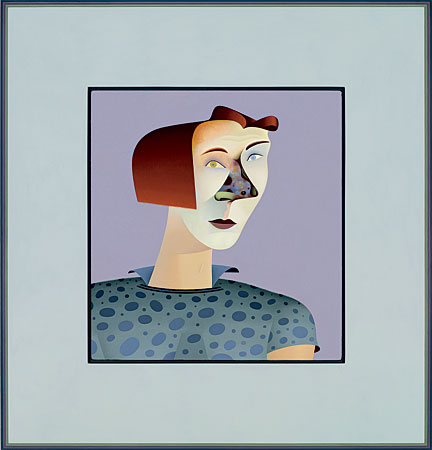
Jim Nutt, Trim, 2010. Hall Collection. Courtesy of David Nolan Gallery, NY
Nutt’s Trim, 2010
Jim Nutt
Picasso regularly broke down the symmetry of the female face, in part to challenge conventions of beauty. Nutt, 74, the renowned Chicago imagist who has spent decades painting imaginary women, frequently employs distortion too—especially when it comes to noses. “The nose can be odd and strange and weird and ridiculous colors and still work,” says Lynne Warren, who curated a retrospective of Nutt’s work for the Museum of Contemporary Art in 2011. “It gives [Nutt] latitude to be inventive.”
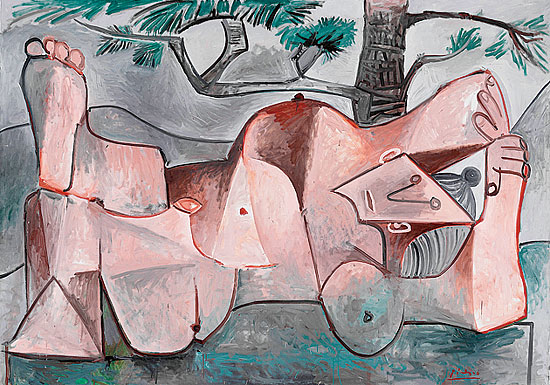
Pablo Picasso, Nude Under a Pine Tree, January 20, 1959. AIC. Bequest of Grant J. Pick © 2012 Estate of Pablo Picasso/ARS, NY
Picasso’s Nude Under a Pine Tree, 1959
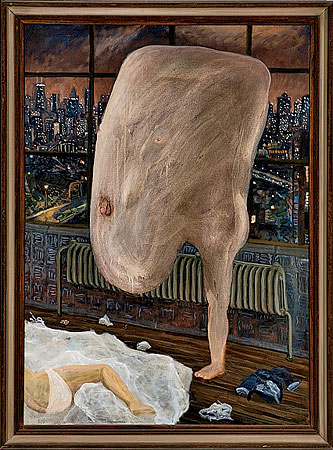
Jim Lutes, The Evening of My Dysfunction, 1985 Collection Museum of Contemporary Art Chicago, gift of Ralph I. and Helyn D. Goldenberg, Ruth Horwich, and Illinois Arts Council Partners in Purchase Grant, 1987.5 © 1985 Jim Lutes
Lutes’s The Evening of My Dysfunction, 1985
Jim Lutes
You’ll find little glorification of the naked body in the work of either Picasso or Lutes, 57, a former Whitney Biennial participant who is represented at Chicago’s Valerie Carberry Gallery. “[I] used the distorted body as a narrative device, the body bearing witness to its past—excesses, deficiencies, wounds, et cetera,” Lutes says.
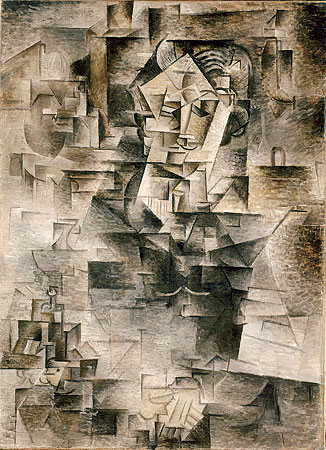
Pablo Picasso, Daniel-Henry Kahnweiler, autumn 1910. AIC. Gift of Mrs. Gilbert W. Chapman in memory of Charles B. Goodspeed © 2012 Estate of Pablo Picasso/ARS, NY
Picasso’s Daniel-Henry Kahnweiler, 1910
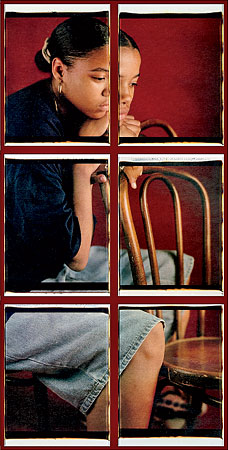
Dawoud Bey, Syretta, 1996. Museum purchase with funds from Ms. Joanna Sturm by exchange. Collection of the Haggerty Museum of Art, Marquette University
Bey’s Syretta, 1996
Dawoud Bey
Cubism, developed by Picasso, offers many reflections on one subject. A photographer and Columbia College professor, Bey, 59, uses this strategy in his Polaroids. “We don’t take things in in a single glance,” he says. “It’s an accumulation of glances that provides a more complete sense of the person in front of us.”
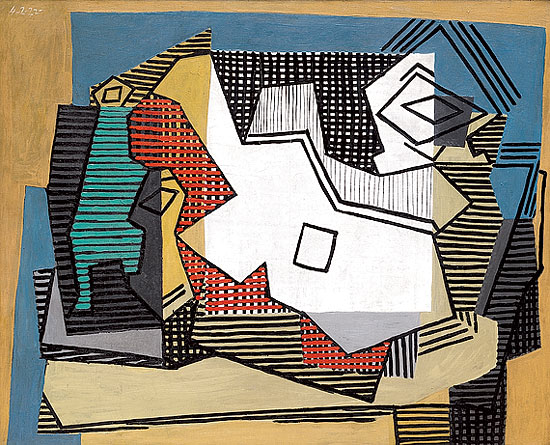
Pablo Picasso, Still Life, February 4, 1922. AIC. Ada Turnbull Hertle Endowment © 2012 Estate of Pablo Picasso/ARS, NY
Picasso’s Still Life, 1922
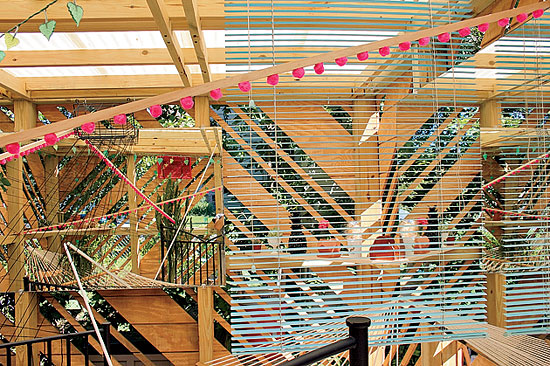
Alberto Aguilar, (In) Between Out, 2012. Installation at the Franklin, Chicago, IL
Aguilar’s (In) Between Out, 2012
Alberto Aguilar
A Picasso still life involves found objects and wild experimentation. Aguilar, 39, similarly pushes boundaries. In (In) Between Out, an installation on view last year at the Franklin, he incorporated fruits and common household objects in a dizzying composition. “I learned a lot about form, invention, and play [from Picasso],” he says.
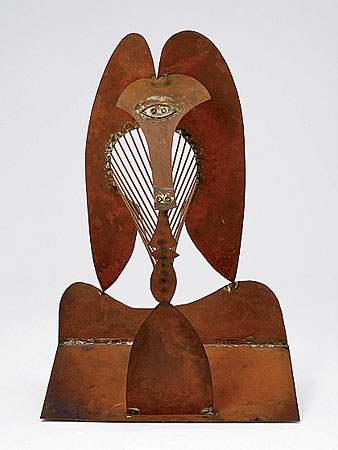
Pablo Picasso, Maquette for Richard J. Daley Center, 1964. AIC. Gift of Pablo Picasso © 2012 Estate of Pablo Picasso/ARS, NY
Picasso’s Maquette for Richard J. Daley Center, 1964
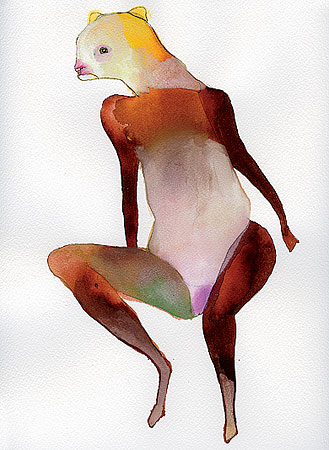
Jessie Mott, Sad Animal, 2010. Courtesy of artist
Mott’s Sad Animal, 2010
Jessie Mott
The half-bull, half-human Minotaur inspired Picasso’s sculpture in Daley Plaza. Mott, 32, is also drawn to shape-shifting creatures. “For me, animal-human metamorphosis is a way of talking about a queer identity that is in flux,” she says. “[It’s] an in-between space that is constantly fracturing and reinventing itself.”
GO Picasso and Chicago runs through May 12 at the Art Institute. For info, artic.edu.


